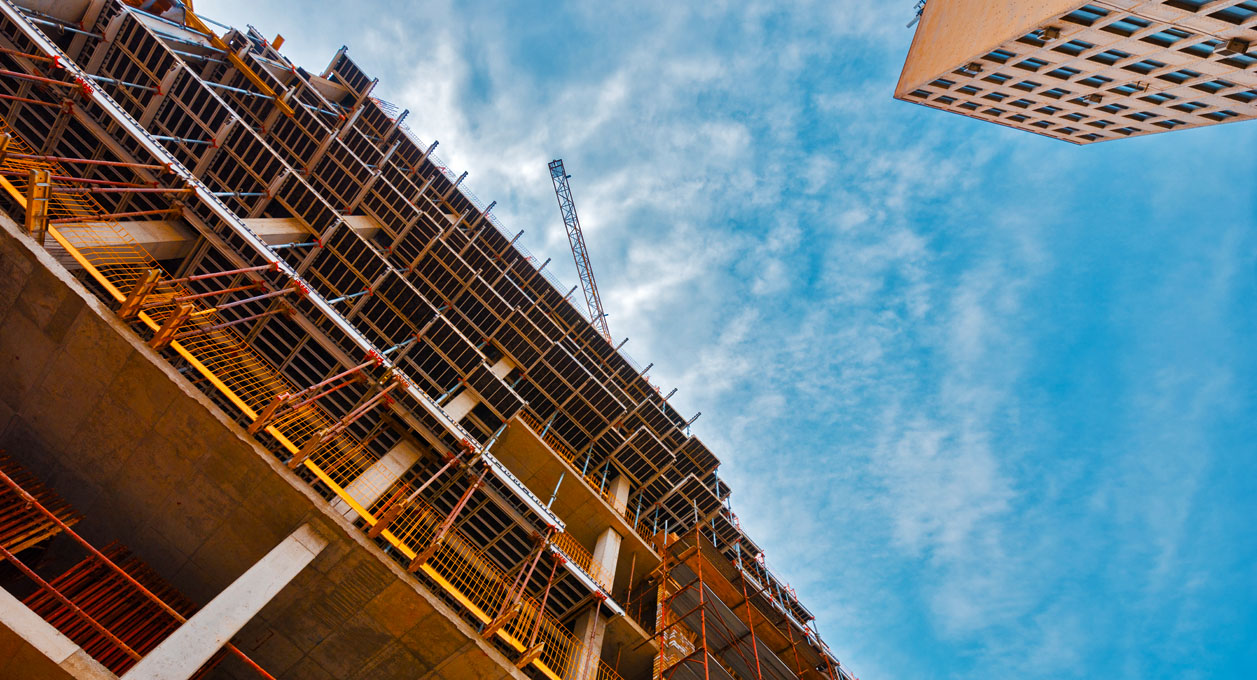What is off-site construction?
Off-site construction is the completion of elements or components for a structure at another location in a factory environment. Sometimes these components are assembled before being delivered to site. The off-site construction factories can either be permanent factories or ‘flying’ factories. ‘Flying’ factories are temporary facilities set up for a specific project and then moved once the project is completed. Off-site construction requires intense planning and design before fabrication and assembling can begin.
What are typical off-site construction methods?
Volumetric or modular systems is one of the most popular off-site construction methods. Whole rooms or parts of a building are fabricated off-site. These modular systems can either be assembled off-site and transported to site for placement or assembled on-site, where they need minor finishes.
Structural insulated panels are high-performance insulation systems. They generally consist of thermal insulation between two sheets of oriented strand board. These can be used if a building or structure needs to be made weatherproof quickly. They are transported to site in panels.
Prefabricated materials are materials that have been prefabricated ahead of time in a factory environment before being transported to site. An example of this would be precast concrete and prefabricated steel reinforcing.
Pre-assembled components is when various components and elements are gathered and assembled under factory conditions into a finished product before being transported to the site. Instead of assembling on-site in unpredictable conditions, pre-assembled components can arrive all ready to be installed.
How is off-site construction the future of construction?
Off-site construction comes with a lot of advantages that will help the UK building industry meet its goals set out in the Construction 2025 Strategy. Construction 2025’s main goals for the construction industry are;
- 50% reduction in carbon emissions
- 50% reduction in time spent on site i.e. faster delivery of the end product
- 33% reduction in the initial cost of construction
- 3% pa growth in the industry until the year 2025
Off-site construction helps reduce carbon emissions because there are fewer deliveries to site and off-site construction is both sustainable and relocatable. Construction sites that use off-site construction methods are shown to be 70 – 80% more efficient than traditional sites that are only 30% efficient. This is because of the high-quality control exercised in a factory setting as opposed to on a construction site, this also leads to less waste. Showing that off-site construction will help in the reduction of carbon emissions.
It allows for shorter construction time, meaning faster delivery of the end product. Installations are faster, cutting down on operation time and skilled labour needed. It is reliable and not weather dependent, no more delays due to rainy days and bad weather.
Off-site construction increases site cost predictability, which helps in the reduction of the initial cost of construction. There are less hidden expenses when it comes to off-site construction and there are early returns due to the quick finishing times. The designs are more lightweight and therefore money is also saved on the design and construction of foundation and structural supports.
There is also an increase in on-site safety. Because components are preassembled and transported in, there is less time spent at extreme heights doing construction works making it a safer environment to work in.
What are the disadvantages of off-site construction?
Off-site construction does come with its own unique set of disadvantages. Certain volumetric systems are structurally bulky which means that the floor to floor heights and wall thicknesses can be affected. Transportation limits and restricts the size that modules and panels that can be delivered in one piece. If it can’t fit on the truck, it’s not going anywhere. Design of spans and configurations can be restricted depending on the factory size. Future renovations and changes to the existing structures are more difficult, thus affecting the flexibility and changeability of the structures.
Off-site construction is definitely the future of the construction industry. The advantages far outweigh the disadvantages. It also is in line with obtaining the goals that have been set out by the Construction 2025 Strategy for the UK building industry. Off-site construction will help in the reduction of carbon emissions, increase final product delivery and reduce the initial costs of construction. With the help of off-site construction, the hope is that the construction industry will continue to grow at a rate of 4.3% per annum as predicted by the Construction 2025 Strategy.
Bio
Martin Heaton is Owner and Director of Heaton Products, a Midlands-based manufacturer and supplier of building products, materials, and equipment to the construction industry. The home of Trestlemate, Propmate, Pull Up Mate, and Up-Rite, Heaton Products is an innovative leader in the development of products that help construction projects become safer, more economical, and more efficient.




